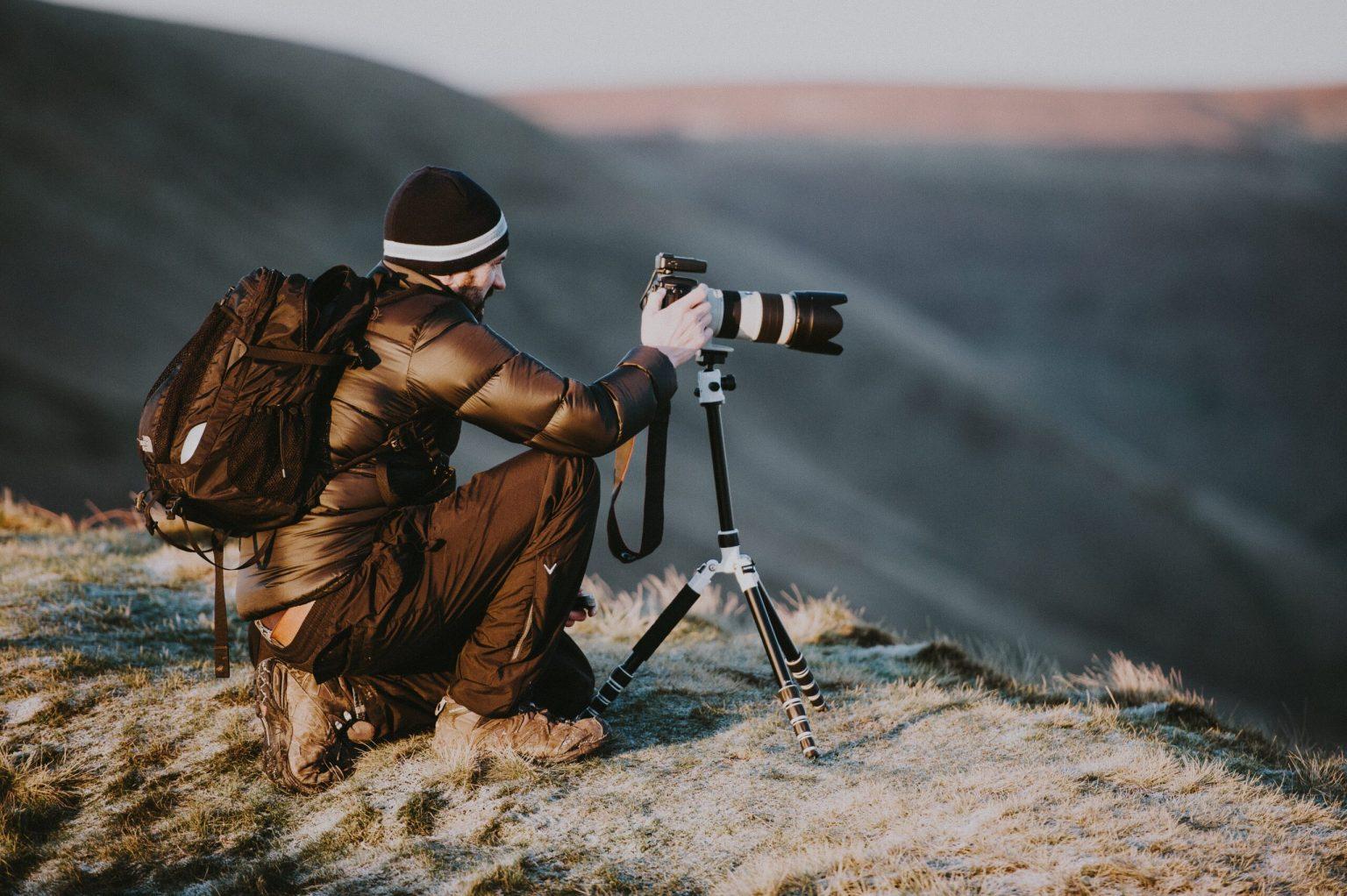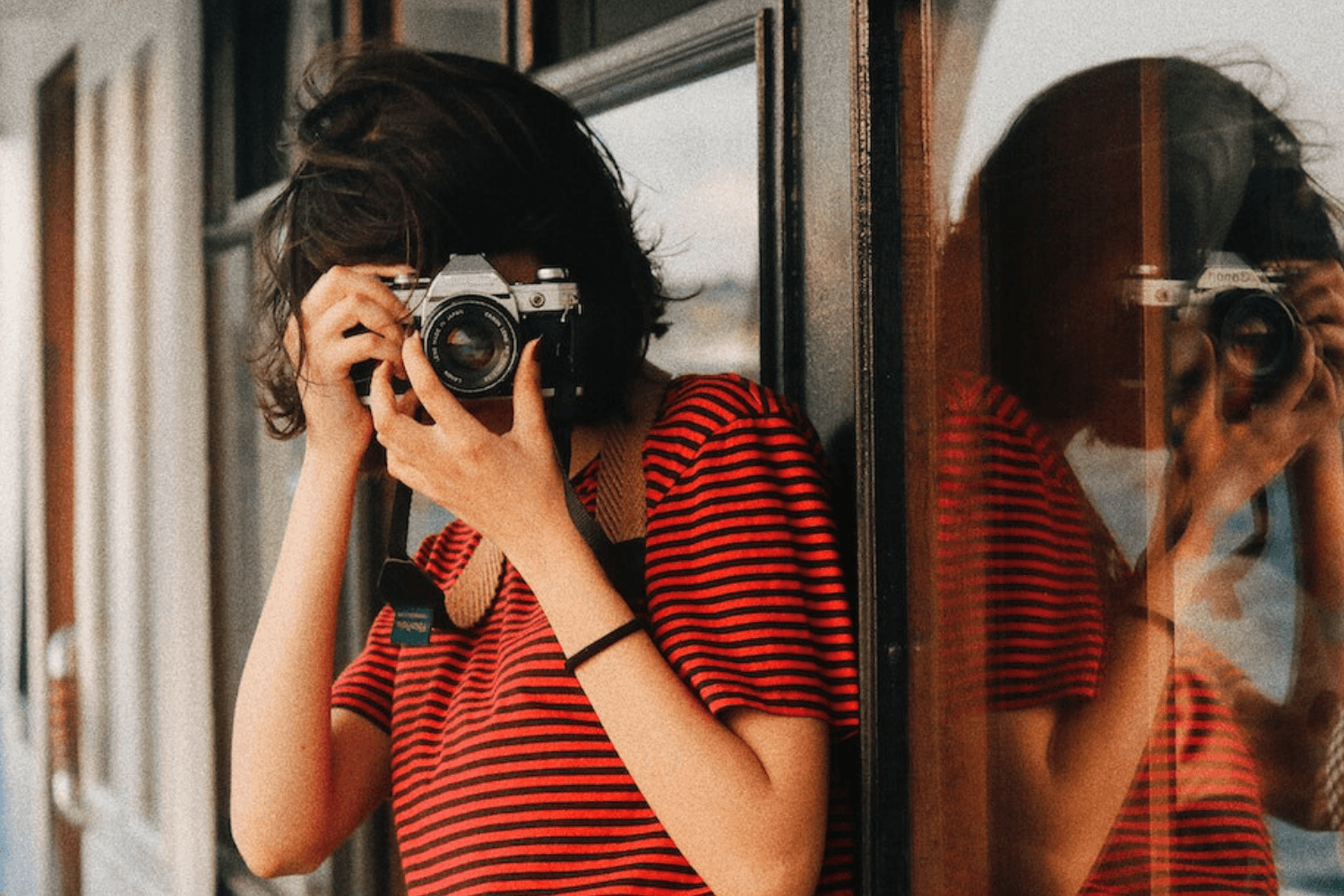How to become a professional photographer: 9 step-by-step guide
Leighton Emmons
Tue Aug 18 2020

Building any career from scratch is an intimidating prospect. Photography is especially challenging. You’ll be entering a marketplace that is highly competitive, very well supplied and where rates of pay can vary wildly. Apart from raw talent, you’ll need plenty of passion and determination to succeed.
We’ve outlined here some the steps you can take towards becoming a professional photographer. We hope it’ll serve as a helpful guideline for any aspiring photographer.
1. Ask yourself the important questions
First and foremost, no one just becomes a professional at anything.
You’ll need to invest countless hours in honing photographing skills just to reach a level where you can start to think about turning your hobby into a career. From there, you’ll be relying on your passion for photography to carry you to the higher echelons.
It sounds obvious, but it’s important to consider why you want to become a photographer and if you’re really ready to make the sacrifices involved in turning professional.
Here are some questions that will help give focus to your ambitions and serve as measure of your commitment to turning pro:
- Is photography something that motivates me? Is there a photographic niche I know of that I’d like to specialize in?
- Am I prepared to constantly learn and hone my photographic skills?
- Photography is competitive, am I prepared to work alone and endure slow business seasons?
- Am I willing to put in the work to ensure I can deliver value to my clients?
- I love photography but do I want it to become the way I earn my living, with all the attendant stresses that can involve?
2. Learn photography fundamentals
Once you’ve accepted that you’re willing to put in the hard yards to become a professional photographer, it’s time to do just that.
While it’s important to ‘learn by doing’ and get out in the field taking photographs, it’s also vital you have a solid grasp of the fundamentals of photography. Modern cameras make taking pictures easy, but as a professional, you need to understand the mechanics and structure of great photography. This includes building a photographic culture, so you can learn from and be inspired by the the greats.
Here are some of the pillars of photography you’ll need to work on:
- Light – Learn how it shapes your pictures, changing the mood and structure of an image. Many cameras will set aperture and speed automatically but as a pro you need to understand how F-stops (apertures) and shutter speeds work together.
- Color – Many photographers are passionate about working in black and white but the reality of a professional career is that most of your work will be in colour. So, learn how colour works and how you can use it to make statements as part of your compositions.
- The moment – Experienced professional photographers have learned to hone an instinctive feeling for photographic moments. They sense when the elements of real life are about to coalesce into a ‘moment’ that can be translated into a powerful picture.
- Image composition – There are are some formal rules of composition to be learned and practised like the golden ratio or rule of thirds.
These are but a few of the key areas you should be focusing on. There’s still imaging and digital processing, the business of photography, and digital design to learn about.
So where do you start?
- Free online courses:
An easy and free way to get started on this path is to enroll in Certificate Photography Programs (The Academic Courses website here outlines a few programs).
These are typically free to learn and online courses that teach you the basics. The content in some of these programs is scheduled to be completed in just one week. If you’re constrained for time and money, this could be a solution for you.
Of course, there’s also the option of reading from photography blogs, we’ve outlined the top 20 blogs for you to learn photography from here.
- Paid online courses:
If you’re a little more serious about investing and learning, there are a range of online courses that require you to pay. For example, Cornell University and the New York Institute of Photography offer online photography courses which are open to enrollment for just about anyone.
For a more in depth look at which online courses might be for you, check out this link here provided by Study.com on online photography courses.
Fill out their inquiry form and they’ll identify a range of schools and courses you could consider applying to.
You can even get specific regarding what course you’d like to take. Whether you’re interested in learning traditional photography, digital photography, photographing nature, photographing people, business of photography, etc. There’s a course out there for you.
- Bachelors and/or Master’s degree in Visual Performing Arts – Photography, Film, & Video:
Now, if you’re really serious about becoming a professional, there is of course the option to attend an accredited university that specializes in photography.
Not sure which schools are some of the best for photography? Here’s just to name a few:
- The New York Institute of Photography – USA
- Parsons School of Design – USA
- Vevey School of Photography – Switzerland
- Royal College of Art – UK
- Ryerson University – Canada
Keep in mind, a lot of these universities have online courses! You don’t need to be there in person to learn everything they have to teach you.
 The Chinstrap penguin (Pygoscelis antarctica) colony with a glacier in the background at Point Wild, where the men of the Shackleton Endurance expedition 1914 to 16 survived, on Elephant Island, an island in the South Shetland Islands archipelago off the Antarctic Peninsula. Photo and story credits by Wolfgang Kaehler
The Chinstrap penguin (Pygoscelis antarctica) colony with a glacier in the background at Point Wild, where the men of the Shackleton Endurance expedition 1914 to 16 survived, on Elephant Island, an island in the South Shetland Islands archipelago off the Antarctic Peninsula. Photo and story credits by Wolfgang Kaehler
3. Learn tips, tricks, and what to look out for from a professional mentor
We know we just recommended taking some kind of educational course on photography for mastering the basics, but the reality is that the classroom can only teach so much.
Not only that, while you want to get out there and begin photographing as soon as possible to make mistakes you can learn from, it often makes more sense to begin by learning from the mistakes of others.
What do we mean by this?
One of the fastest ways to learn of the real nitty-gritty tips of photography is to hear it from a professional photographer firsthand.
Learning from photographic mentors is helpful for pointing out to you what to look for, teaching you how to improve, and giving other helpful recommendations.
This can be done in a few ways.
- **Begin a photographic internship **
Many photographers and photographic organizations are willing to share their expertise and experience with someone who has an avid passion to learn. You can check out a number of available photography related internships here.
- Work as an assistant
Many leading professional photographers learned the ropes by working as an assistant. An assistant’s job is to take care of the studio, manage equipment and set up lighting. In bigger studios you might start out as an assistant to an assistant and work your way up from there.
It’s a great way to experience first-hand how professional photographers work, and to learn all the tricks of the trade. Once you feel confident enough, you can branch out as a professional in your own right…and hire your own assistants!
- Find a mentor
Experienced professional photographers are often generous with their knowledge. If they see your passion and determination, chances are they’ll be happy to give you helping hand with advice and insider tips. The key is to find a photographer whose work you admire and then start asking questions. You’ll quickly find out if they are willing to help out.
Sometimes finding a mentor can mean joining a hands-on workshops with a well known professional. Spending a even a day with a top photographer whose work inspires you can give you a learning boost that otherwise make take months or years to achieve.
4. Find your photographic niche – what makes you tick?
The art of photography is vast, and if you plan on becoming a professional, you’ll need to learn all about the nuances of an individual style. While it’s great to know your strengths, you should probably aim to develop a broad skillset, you can remain versatile when presenting your work to future clients.
With that said, it definitely helps to find some specific niches where you feel you can build a reputation for excellence.
Focusing on your individual strengths as a photographer will help you differentiate yourself from the crowd and create you own branded style of photography. You can read more about this in, 4 Insights We Learned From Studying The Greats.
Now, photography may be your passion but at some point, if you want to be a true professional, you’ll need to think about the money side of things too. We’ve outlined here which photography genres are most profitable, in case you’re looking to make an informed decision based on financial security.
But always remember, if you don’t love what you’re doing, it’ll eventually become a burden, so always prioritize a photographic style that you genuinely love working on!
5. Obtain the equipment
It’s easy to get carried away when it comes to equipment. Too many aspiring photographers think that if they have all the best equipment then they’ll be able to take great pictures. It doesn’t work that way.
The most important pieces of equipment you have as a photographer can’t be purchased in a photo store; they are your eyes and your photographic intuition. If you haven’t trained your photographic eye and honed your ability to see photographs around you, then even the finest equipment won’t salvage your career.
Which is not say gear isn’t important. A good pro will always have the right gear for the right situation.
The bottom line is that you’ll always need two cameras when working on assignment – you can’t afford to have a camera to go wrong and have nothing to shoot with. You’ll also need to have the right lenses for the niche you have chosen – for example, a mid range telephoto with a wide aperture for the portraitist (like an 80mm F2.8), or a good quality zoom lens (200 mm upwards) for wildlife and sports photography, and some wide and long lenses for documentary work.
You don’t need to go for the absolute top-of-the-line model but you should plan on investing in a well-built professional camera with a large sensor. There’s no point in taking great pictures with a cheap camera. Plus, if your clients are paying you good money for your services, they’ll expect to see you’ve invested in some seriously pro equipment.
 Italy, Cinque Terre National Park: Panoramic side view of Manarola, one of the five coastal villages of the Cinque Terre national park, at sunset. Photo and story credits by Alessandro Bosio
Italy, Cinque Terre National Park: Panoramic side view of Manarola, one of the five coastal villages of the Cinque Terre national park, at sunset. Photo and story credits by Alessandro Bosio
6. Master your camera
Regardless of what camera you use, it’s going to be loaded with features and settings that you’ll need to master and be fully familiar with.
We recommend taking the time to learn about all your camera’s functions and how they can complement your photography. An in-depth understanding of what your camera is capable of will enhance your images. A good professional, handles his or her camera like a musician handles their instrument, with an intimate understanding of all its features and possibilities.
For example, understanding how to photograph low light photography with ISO and ASA settings can make all the difference in the quality of your work if you choose to work in those difficult conditions.
7. Work towards your 10,000 hours
Assuming photography is a passion of yours, it shouldn’t feel like a burden to be photographing every day!
It all comes down to practice and practice means investing the time.
Few simple pieces of advice:
- Always carry a camera – So you’re ready to capture pictures anytime, anyplace.
- Carve out time to explore and experiment – Sometimes great photographs come from unexpected moments. To encounter these moments, you’ll need to spend time exploring aimlessly in different areas. Dedicate time every week to to walking around and photographing what you see.
- Offer to work for free – At this point you may not even have any photographs to showcase. Offer to work for free for friends, family, and prospective clients to begin building a portfolio. Through this, you’ll also be getting good photography practice.
8. Build out a portfolio website
Now, you’ve done the work, it’s time to show it off.
Having a portfolio website is critical for gaining exposure, generating traffic to your work, having a place for people to see what you’ve done, and making sales.
Naturally, you’ll want to design your site the way you want. You’ll also want your website to reflect the work you want to be known for.
Look for a platform that offers customizability, visibility optimization (good for SEO and ranking high on Google), is easy to use, doesn’t require coding, and of course, has incredible value for money.
LightRocket is an all-in-one platform for managing your photos with professional archive tools and seamlessly loading them into unique, professional looking portfolio websites. You’ll get to add your own logo, watermarks, and lay out your images in galleries however you prefer.
You won’t need to do any coding, and its free to join. If you decide to go for a paid plan, LightRocket offers some of the most price competitive options in the industry to ensure you don’t overpay for features that every photographer needs.
 Dogon people (men only) in traditional dance costumes in the village of Sangha in the Dogon country in Mali, West Africa. Photo and story credits by Wolfgang Kaehler
Dogon people (men only) in traditional dance costumes in the village of Sangha in the Dogon country in Mali, West Africa. Photo and story credits by Wolfgang Kaehler
9. Grow your business
Photography is not an easy industry to thrive in. If you want to grow your business and/or brand, you’ll need to prioritize and focus your efforts on what will deliver the greatest ROI (return on investment). Also, you’ll want this to be keeping in line with whatever you love doing.
Know that there are a number of ways to grow your photographic business.
Maybe you want to specialize in selling your own photography workshops and courses.
Maybe you wish to become a dedicated photographer for an agency or organization.
Maybe you want to sell raw images exclusively through your website.
There’s a number of ways to monetize your skills and your work (assuming you can provide high quality content and be able to deliver value).
We’ve outlined a number of these ways you can get creative to monetize your work in this article 11 ways to make money with photography.
We are wishing you all the greatest success in becoming a professional photographer and hope you’ll consider joining our community of likeminded, passionate photographers at LightRocket. It’s free to use after all.
Written by Leighton Emmons.
Featured photograph by Annie Spratt
To read more helpful articles on photography, check out our blog page.
Join our growing photographer community at LightRocket and get powerful archive management and website building tools for free!


